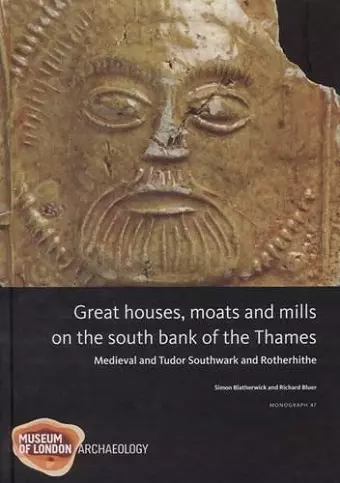Great Houses, Moats and Mills on the South Bank of the Thames
Richard Bluer author Simon Blatherwick author
Format:Hardback
Publisher:Museum of London Archaeology
Published:14th Apr '09
Currently unavailable, our supplier has not provided us a restock date

Regeneration in the 1980s-90s on the south bank of the Thames resulted in archaeological and historical investigations at Platform Wharf, Rotherhithe, and next to London Bridge, in Southwark. The development of both sites from the 14th century is of major interest. The Rotherhithe property was acquired c 1349 by Edward III and the existing house rebuilt by him in 1353-61 with two courts, including a riverside range of apartments. Royal interest ceased after Edward's reign, and the house passed to Bermondsey Priory in 1399. The fragmentation of the site into smaller properties, including ones with industrial uses, is charted. The Southwark site contained three notable residences during the medieval period and tidal mills on the waterfront. The 14th-century moated house of the Dunley family and a pleasure-house built by Edward II, the Rosary, were both acquired by Sir John Fastolf for his own grand London residence in the 1440s. In the later 16th century there was massive immigration into this part of Southwark and by the mid 17th century the former moats and gardens were built over with small properties and alleys. The moat infills produced exceptionally rich assemblages of domestic artefacts and ceramics, the waterside location preserved a wide variety of plants, timber structures and woodworking evidence.
A model of its kind in the clarity of its prose, copious and clear illustrations (many in color), integration of documentary and archaeological evidence, and attempts to place its findings in a larger context.' -- The Medieval Review The Medieval Review This book presents a wealth of information to be mined. There is rich material to be extracted here for diligent laborers who are prepared to work their way through the details, and that is a testimony to those who have prepared these very useful excavation reports.' -- Speculum Speculum
ISBN: 9781901992830
Dimensions: unknown
Weight: unknown
240 pages